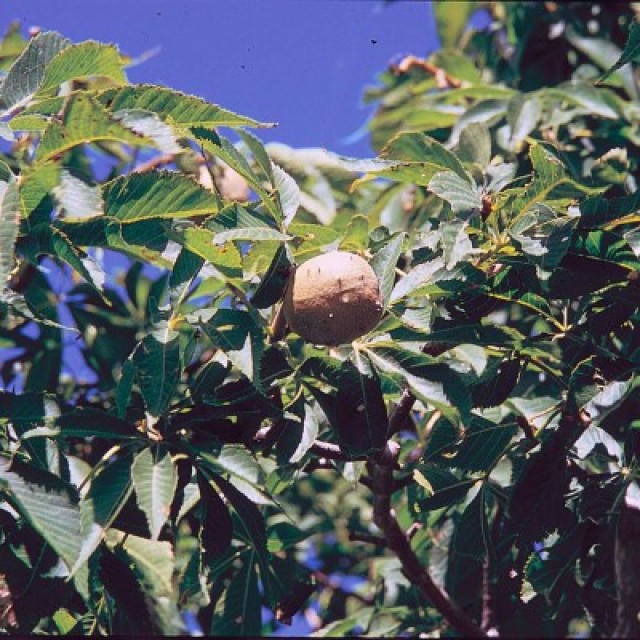COMMON NAME
Ohio buckeye
SCIENTIFIC NAME
Aesculus glabra
ALSO KNOWN AS
American buckeye, Buckeye, Horse chestnut, Texas buckeye, White buckeye
Plant family
Soapberry (Sapindaceae)
Plant group
Deciduous Trees and Shrubs
The state tree of Ohio, with a dense oval-to-round crown, branching quite low, sometimes found as a thicket-forming shrub.
125 reports
54+
OBSERVERS
125+
OBSERVATIONS
Identification hints
Ohio buckeye occurs in mixed hardwood forests of bottom lands along river and stream banks and in rich, moist soils of ravines and other steep to gentle slopes, less commonly on drier sites mixed in oak- hickory stands, on limestone slopes in the southwestern portion of the range. It is shade tolerant and often found in beech-sugar maple woods. Ohio buckeye is one of the first trees to leaf out in spring. It typically blooms between March and May, after the leaves appear. Fruiting occurs between September & October. Source: USDA NRCS
Did you know?
The common name "Buckeye" was derived from the Native Americans who noticed that the glossy, chestnut-brown seeds with the lighter circular "eye" looked very similar to the eye of a buck (male) deer. Keeping a "buckeye nut" in one's pocket is considered good luck. However, all parts of the plant (leaves, bark, fruit) are highly toxic if ingested. Many ranchers and farmers have eradicated it to prevent livestock poisoning. Despite the poisonous properties to humans and livestock, squirrels are known to eat the raw seeds. Native Americans ate roasted seeds and ground buckeye to use as a powder to stun fish in ponds.
DISTRIBUTION IN TH U.S.
There is no information available about this species.
HABITAT
There is no information available about this species.
See Menu
- 2021 Chicago Botanic Garden. All Rights Reserved.
-
Creative Commons
BY-NC-SA 4.0 - Terms of Use
- Privacy Policy
- Data Sharing and Citation Policies
- 2021 Chicago Botanic Garden. All Rights Reserved.



